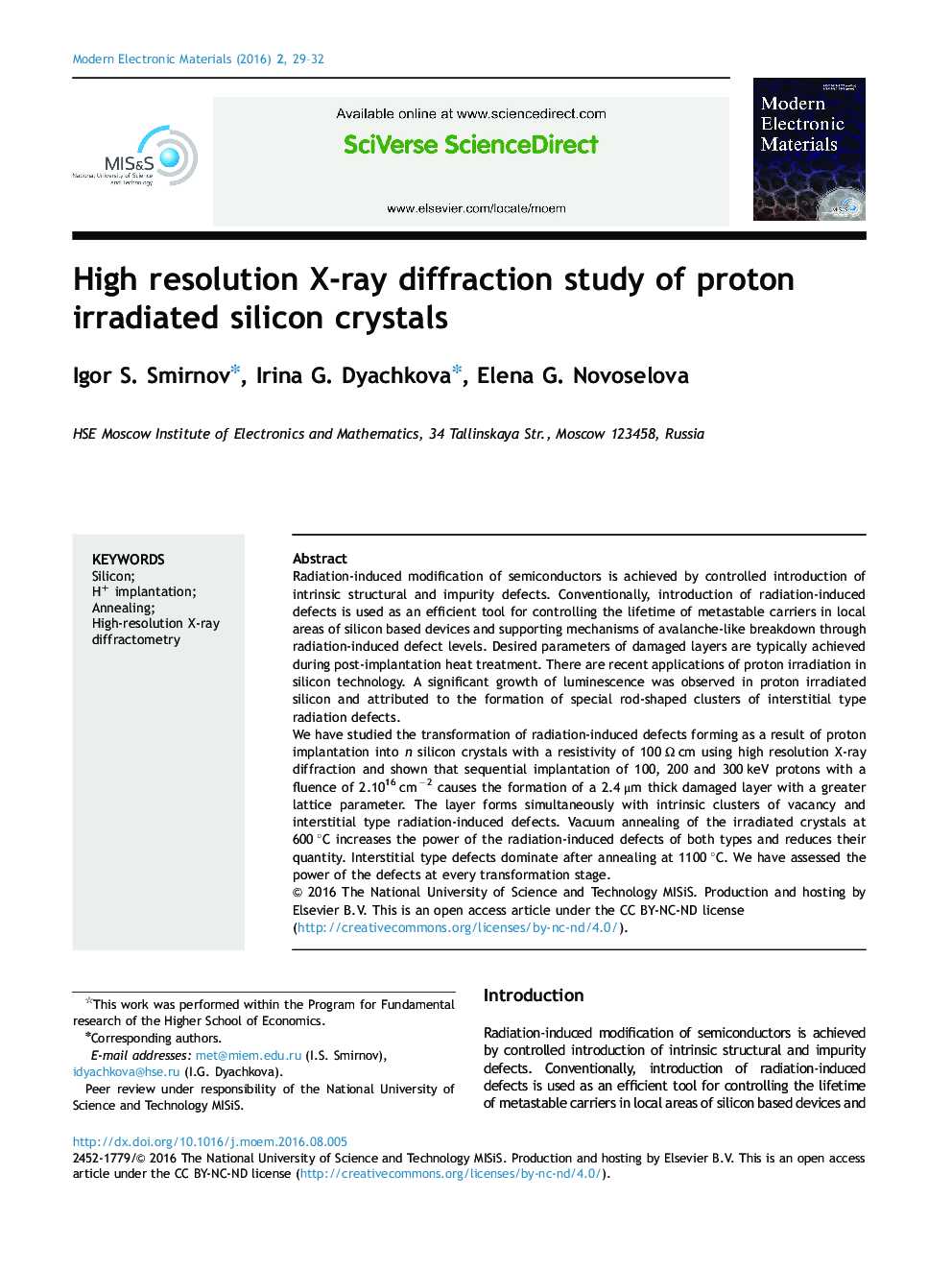| Article ID | Journal | Published Year | Pages | File Type |
|---|---|---|---|---|
| 7924468 | Modern Electronic Materials | 2016 | 4 Pages |
Abstract
We have studied the transformation of radiation-induced defects forming as a result of proton implantation into n silicon crystals with a resistivity of 100 Ω cm using high resolution X-ray diffraction and shown that sequential implantation of 100, 200 and 300 keV protons with a fluence of 2.1016 cmâ2 causes the formation of a 2.4 μm thick damaged layer with a greater lattice parameter. The layer forms simultaneously with intrinsic clusters of vacancy and interstitial type radiation-induced defects. Vacuum annealing of the irradiated crystals at 600 °C increases the power of the radiation-induced defects of both types and reduces their quantity. Interstitial type defects dominate after annealing at 1100 °C. We have assessed the power of the defects at every transformation stage.
Keywords
Related Topics
Physical Sciences and Engineering
Materials Science
Electronic, Optical and Magnetic Materials
Authors
Igor S. Smirnov, Irina G. Dyachkova, Elena G. Novoselova,
